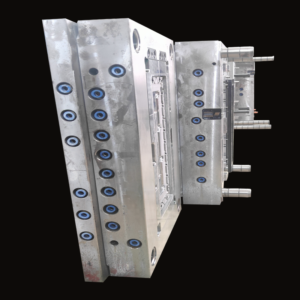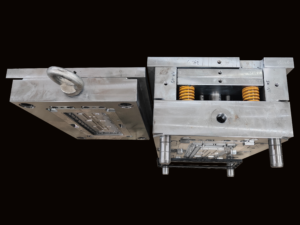Welcome! All manufacturing enthusiasts and industry professional.Yeah,this is Thesun Industry.Following the last 10 Global Leading Silicone Products Manufacturers Profiles, today let’s introduce the famous mold manufacturing countries in the world and some examples of these countries, partners ready?Today we are delving into the world of mold technology, an important aspect of the manufacturing process that is often overlooked. Mold technology is the backbone of manufacturing excellence, and global leaders in the field play a key role in shaping the industry. From precision engineering to innovative design, these leaders are revolutionizing the way molds are made and used in a variety of manufacturing processes. Join us as we explore the top ten global leaders in mold technology and gain insight into their contributions to manufacturing.
So, everyone, let us talk about the country that has the most advanced mold technology in the world!
As we all know,different regions have distinct perspectives on the significance of the mold industry. In China, molds are likened to money printing machines, highlighting their economic importance. The U.S. recognizes molds as the cornerstone of its industry, while Germany views them as pivotal in metal processing. Singapore sees the mold industry as a crucial magnet, and many European Union nations consider molds to be as valuable as gold. This underscores the global recognition of molds’ pivotal role in manufacturing. Notably, China prioritized molds in its 1989 industrial policy, emphasizing their importance in technological advancement within the machinery sector.
Japan
Japan’s mold industry has long held a leading position globally, known for its formidable production capacity and technological prowess. At its peak, Japan accounted for approximately 40% of global mold production, dominating international markets with significant exports annually. Among its key importers, South Korea, mainland China, Thailand, and the United States top the list. Renowned Japanese companies such as Mitsubishi Materials, Sumitomo Electric, and Toshiba Tungaloy lead the sector, renowned for their expertise in carbide tool manufacturing. Japanese manufacturers prioritize advanced techniques like precision polishing and grinding, while counterparts in Germany focus on enhancing machining accuracy and efficiency, particularly in electrical discharge machining. The country boasts around 10,000 mold companies, reflecting its robust and diversified industry landscape.

Germany
Germany stands at the forefront of mold manufacturing globally, boasting a rich history of engagement in mold production and technological innovation. Renowned for its unparalleled quality and global recognition, Germany is revered as a leading supplier of high-end molds worldwide. The German mold industry operates on a shared vision of industry-wide collaboration, emphasizing collective efforts, technological advancement, and mutual support to leverage strengths and address weaknesses. In response to evolving product demands, both large corporations and numerous SMEs have established dedicated development centers, actively engaging in customer-centric research and development initiatives. Germany’s steadfast commitment to research underscores its resilience in the fiercely competitive global market, with a stable export rate of approximately 33%. According to data from the German Engineering Federation (VDMA), there are approximately 5,000 mold manufacturers contributing to Germany’s enduring dominance in the industry.
China
China’s mold industry boasts approximately 30,000 enterprises, with 5% being state-owned, 10% joint ventures, and the rest privately owned. Employing over a million workers, it’s a significant contributor to the economy. The China Mold Industry Association analyzed the top 20 global mold manufacturing countries, classifying them into four groups based on market size, competitiveness, and growth potential. These categories include “Global Leaders” (Germany, Japan, South Korea, the United States, and China), “Established Players” (Switzerland, Canada, Austria, Italy, and Spain), “Emerging Contenders” (Portugal, Czech Republic, Poland, and Turkey), and “Developing Markets” (Mexico, South Africa, India, Brazil, Indonesia, and Vietnam).
The United States
The United States leads the global mold manufacturing industry with approximately 8,000 enterprises, where 15% employ 60% of the workforce and 15–50 person companies constitute 30%. As a mature high-tech industry, the U.S. mold sector boasts clear specialization, with each factory excelling in specific areas such as chassis sub-frame type molds at Synergis. Operational characteristics include streamlined personnel, precise product specialization, utilization of advanced management systems, and highly standardized process management.
Italy
Italy’s mold industry is globally recognized for its cutting-edge production technology. Formerly part of the Italian Machinery Manufacturing Federation’s special machinery manufacturing sector, it boasts over 500 European patents and specializes in plastic and rubber processing machinery and mold manufacturing. Italian mold enterprises offer diverse products and value-added services, with per capita annual sales exceeding $100,000 USD. Their advanced technology facilitates the production of large-scale, precise, and complex molds, vital for the global automotive, electronics, communications, and home appliances industries.

South Korea
South Korea is renowned as a global hub for high-tech industries, boasting top-tier production in shipbuilding, automobiles, electronics, steel, and textiles. It leads the world in semiconductor sales and is a major player in memory and display technologies like LCDs and plasma displays. The country also excels in cell phone manufacturing and ranks third globally in industrial robot deployment. With ambitious plans to establish 10,000 smart manufacturing facilities by 2020, South Korea aims to transform a third of its factories into smart ones, enhancing competitiveness and targeting $1 trillion in manufacturing exports by 2024 under the “manufacturing innovation 3.0” strategy.
Singapore
Singapore, despite its small population of only 3 million, prioritizes and supports the development of precision molds through strategic governmental policies. With over 1,000 enterprises specializing in various types of molds and precision processing, the mold industry’s annual output value exceeds 4.5 billion yuan. This thriving sector significantly influences and contributes to the growth of Singapore’s economy within the Asian mold industry landscape.
Switzerland
Switzerland, despite its small size with a land area of only 41,000 square kilometers and a population of 8.5 million as of 2018, boasts an impressive economic stature on the global stage. Renowned for its 21 Fortune 500 companies, spanning sectors such as finance, pharmaceuticals, retail, and industrial manufacturing, Switzerland consistently maintains a dominant position on the global economic landscape. Among its prominent mold manufacturers are Swiss industry leaders SCHTTLI, FOSTAG, and KEBO.

All in all,we hope you found this exploration of the top global leaders in mold technology insightful and inspiring. We invite you to share your thoughts and experiences with mold technology in the comments below. Additionally, feel free to leave suggestions for topics you’d like to see covered in future issues. Your feedback is invaluable to us as we strive to deliver content that resonates with our audience. Thank you for joining us on this journey through the world of mold technology, and we look forward to engaging with you in the discussions to come.

